Atlantis-Kurzanleitung
This is a quick guide for Atlantis, which mainly describes the online operation. Knowledge of the rules is assumed here.
Tavolo di gioco
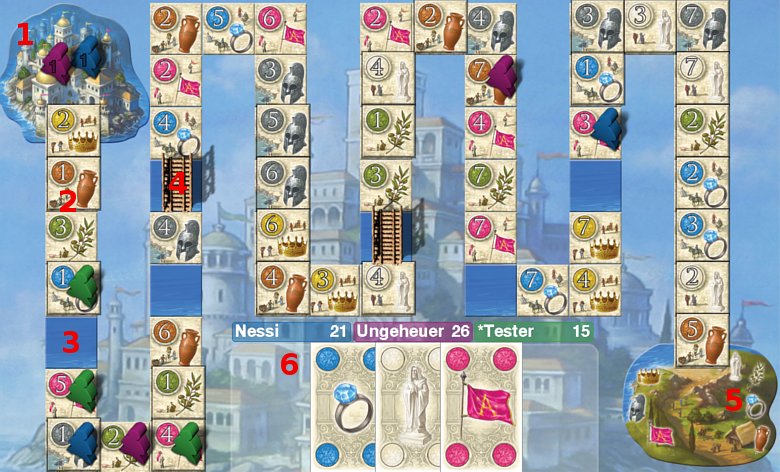
- Starting space Atlantis
- Path tiles with values from 1-7
- Water gap
- Bridge
- Target space mainland
- Stato dei giocatori
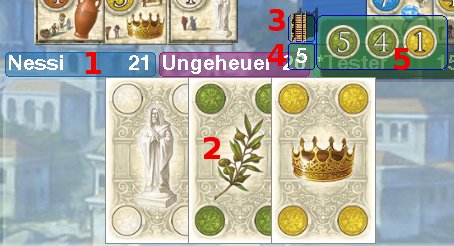
- Player name and current score
- Own hand cards
- Bridge display (whether already built or not)
- Hand number of cards
- collected point tiles
Move figure
To move a figure, the active player must first select a figure that he wants to move , select and click. The possible goals that can be achieved with the help of his movement cards are then displayed for this figure.
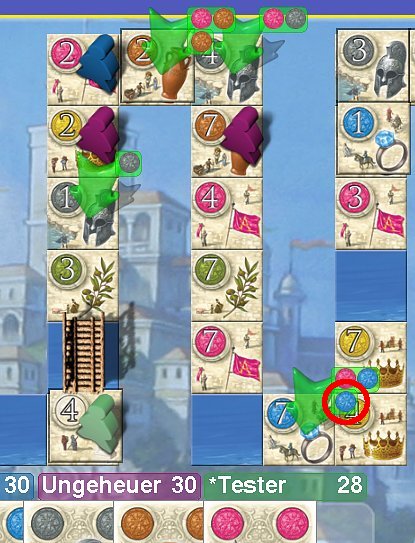
Example: The green player has selected his figure at the bottom left . He has one hand each of blue, gray, brown and pink cards. The green arrows now show him which spaces he could end his turn on. To the right of the green arrows it is indicated which cards he needs for this turn. To move to the gray one, for example, he only needs one gray card. To get to the gray four, he can first play the pink card. Since the pink two is occupied, he has to continue playing there and can move to the next gray field, i.e. the gray four, by playing the gray card. To get to the brown two or the blue seven, he has two options. He gets there directly with just one brown or blue card or, if he plays the pink card first, he gets to his destination with two cards. To select the desired target, simply click on the corresponding colored dot next to the green arrow. If Green wanted to jump to the blue seven with just one blue card, he would have to click on the point circled in red.
To build a bridge, click on the desired water field.

To complete the construction, click on the confirmation field.
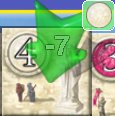
How much you have to pay for a path with water gaps is shown when you move your mouse over the corresponding green target arrow.

Once you have selected your move and clicked on a colored dot, this window opens if you have to cross a gap in water. This shows how much road toll has to be paid. You can pay with collected path tiles and/or with hand cards.
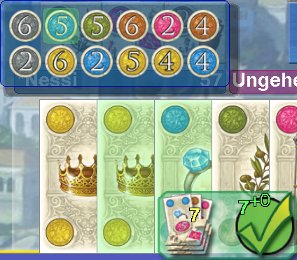
To do this, move your mouse over your Name and select the corresponding points there and/or click on which of the cards in your hand. Once you have clicked together the desired amount, confirm with the green tick.
Attention: You can also overpay (forcibly or unintentionally)! For example, if you only have to pay one, but you only have higher point tiles and no more cards in your hand, you have to overpay! In other words, you then have to give up a higher-value tile and give away valuable points. If you don't pay attention when dialing and choose again, you should always pay attention to which number is displayed with the green checkmark in order to avoid unintentionally overpaying.
Since the player has not collected a seven tile here, he has to shuffle: he chooses the blue five tile and two more cards from his hand.
{ 7}Special case: If a player cannot make a valid move with his hand cards, he must sit out this round. As compensation, he receives two hand cards.
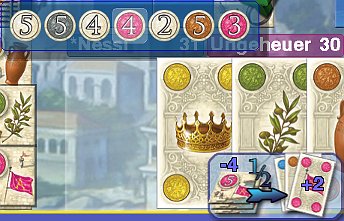
At the beginning of his turn, a player can Buy movement cards. To do this, he moves the mouse over his name at the beginning of his turn to call up the score tiles. Then he can choose a tile and receives half of the value (rounding down for odd numbers) in hand cards.

